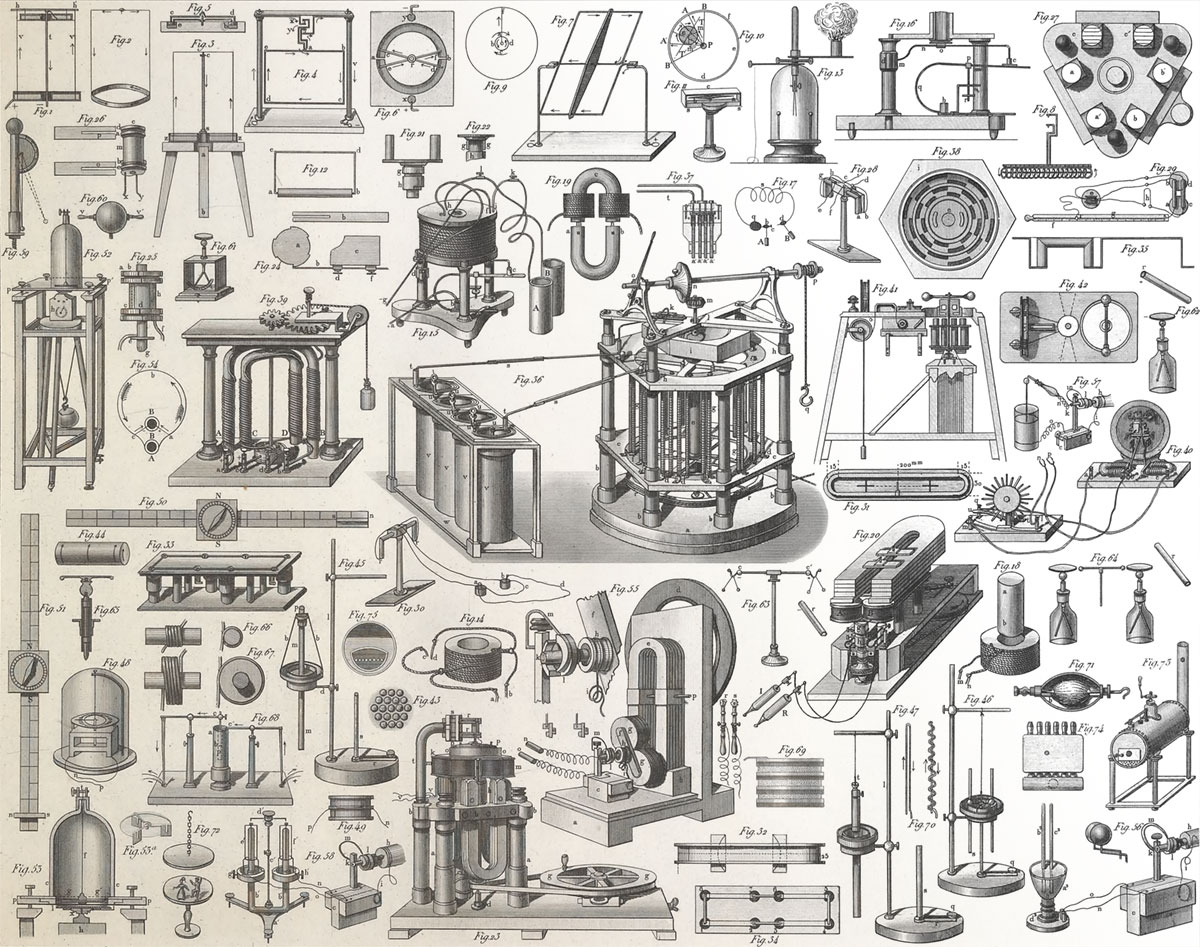Restored and reimagined
For the first time, J.G. Heck’s Iconographic Encyclopædia has been transformed into a single comprehensive and interactive site.
For the first time, J.G. Heck’s Iconographic Encyclopædia has been transformed into a single comprehensive and interactive site.
In 1844, German publisher Johann Georg Heck started compiling his illustrated encyclopedia, covering wide range of subjects from astronomy to zoology.
Published between 1849 and 1851, the 10-part collection comprised 500 steel engraved plates containing more than 13,000 illustrations and more than 1.6 million words of detailed descriptions. Originally titled Bilder-Atlas zum Conversations-Lexicon. Ikonographische Encyklopädie der Wissenschaften und Künste, it was released as a supplement to Brockhaus Enzyklopädie, a German encyclopedia. Between 1851 and 1852, it was translated to English as Iconographic Encyclopædia of Science, Literature, and Art and edited by Spencer Fullerton Baird, who would later become the first curator of the Smithsonian Institution.
Scans of the original plates and English translation are available on the Internet Archive: plates (vol. 1, vol. 2), descriptions (vol. 1, vol. 2, vol. 3, vol. 4).
These scans were restored and integrated with the original descriptions to create a reimagined modern edition of the Iconographic Encylopædia. Ten primary subjects were originally compiled, which were later divided into eighteen subjects for the English translation:
This project was a labor of love. Work began at the end of December 2020 and over the next 13 months, each of Heck’s 500 plates were carefully restored from their original scans and each of the 13,329 illustrations extracted.
Original high-resolution scans of all 500 plates were downloaded from the Internet Archive (vol. 1, vol. 2).
Each plate’s scan was restored by removing aging, marks, and smudges in a process that took on average 3 hours per plate and nearly 1,500 hours total.
An overlay of hotspots was created for each plate so clicking figures could display details of what they were and where they were mentioned in the text.
Every figure was extracted from each plate as a separate image so they could be shown within the text where they were referenced and included on posters.
Text was copied from the Internet Archive (vol. 1, vol. 2, vol. 3, vol. 4), corrected, and reformatted for online display. Each mention of a figure in the original text was made into a button with a small thumbnail of the figure. Clicking each figure displays a larger version, its caption, and a link back to the original plate, and the ability to download the original.
There’s a lot more that went into every aspect of this project.
Everyone should be able to enjoy and use Heck’s collection of illustrations in their own projects if they’re useful. To help with this, all of the restored illustrations—including the full plates—have been released under the CC0 1.0 Universal (CC0 1.0) license and can be used freely without any restrictions.
Site and poster design are copyright Nicholas Rougeux.
Looking for even higher quality images? Check out the scans of the original German illustrations at the David Rumsey Map Collection. These images are free to use but only for non-commercial purposes and require attribution.
Every effort has been made to create an accurate online edition of Iconographic Encylopædia but errors can still slip through—whether they’re from scans of the original text, misinterpretations of figures, or something else. Please send corrections and they will be fixed.
Very special thanks is owed to the helpful staff at the Smithsonian Libraries and Archives. The kind staff at the Smithsonian dug through their archives and re-uploaded the original high-quality scans of the English edition to the Internet Archive which were used for this project. Their kind efforts have been invaluable in bringing this project to life.







